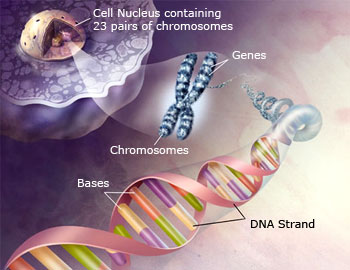 Hereditary factors located on the chromosomes.
Chromosomes, which are located in the nucleus of cells, serve as carriers of genes and constitute the physical basis of heredity.
Hereditary factors located on the chromosomes.
Chromosomes, which are located in the nucleus of cells, serve as carriers of genes and constitute the physical basis of heredity.
Heredity depends upon the protoplasmic continuity (living contents of a cell) between the parent and the offspring. It is the gametes that establish the continuity between parent and offspring and hence, the mechanism of inheritance operates across this exceedingly slender protoplasmic bridge.
The machinery of inheritance lies mainly in the nucleus or more particularly the chromosomes of the cells which form the gametes. The chromosomes in fact are the only entities that are always passed on in equal quantities from parents to offspring, during sexual reproduction.
The rediscovery of Mendelism in 1900 and the subsequent developments in the field of genetics, very clearly established the importance of chromosomes in the inheritance of characters. This led to the establishment of the chromosomal theory of inheritance.